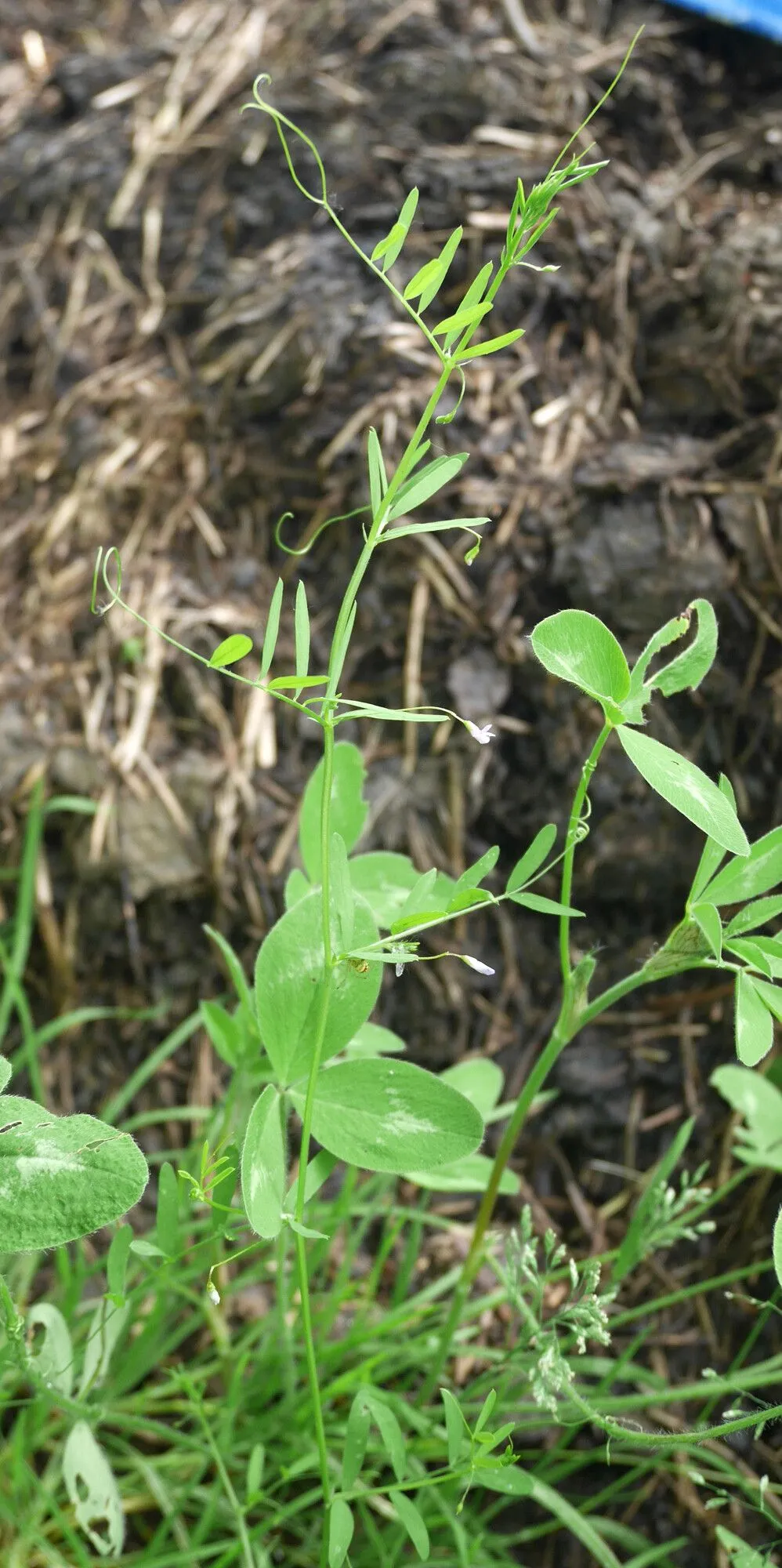
Author: (L.) Schreb.
Bibliography: Spic. Fl. Lips.: 26 (1771)
Year: 1771
Status: accepted
Rank: species
Genus: Vicia
Vegetable: False
Observations: Macaronesia, Temp. Eurasia to Indian Subcontinent, N. Africa
Four-seed vetch, known scientifically as Vicia tetrasperma, is a plant species first described in 1771 in the “Spicilegium Florae Lipsiensis” by noted botanist (L.) Schreb. This species, part of the Fabaceae family, is notable for its widespread distribution across various geographic regions, including Macaronesia, temperate Eurasia, the Indian Subcontinent, and Northern Africa.
Adaptable and resilient, Vicia tetrasperma thrives in a variety of climates and soils, making it a species of interest for ecological and botanical studies. Its ability to spread across such diverse regions indicates a strong adaptability to different environmental conditions. The plant is typically found in fields, roadsides, and other disturbed habitats, where it plays an essential role in nitrogen fixation, thereby enriching the soil and supporting agricultural ecosystems.
The four-seed vetch is distinguishable by its delicate, vine-like stems and tiny, four-seeded pods, a characteristic from which its common name is derived. The small, paired leaflets and tendrils assist the plant in climbing and sprawling across other vegetation, enhancing its ability to capture sunlight efficiently.
Given its extensive range and adaptability, Vicia tetrasperma serves as a valuable species for understanding ecological interactions and plant distribution patterns. Furthermore, its membership in the Fabaceae family links it to a group of plants that are fundamental to both natural ecosystems and human agriculture due to their role in nitrogen cycling.
In conclusion, the four-seed vetch exemplifies the intricate connections between plant species and their environments, underlining the importance of such plants in global ecological balances and agricultural systems.
Eng: four-seed vetch, lentil tare, lentil vetch, slender vetch, smooth tare, smooth vetch, sparrow vetch
Dan: tadder-vikke
Deu: viersamige wicke
Nno: firfrøvikke
Nob: firfrøvikke
Swe: mäkivirvilä, sparvvicker
Fin: mäkivirvilä
Nld: slanke wikke en vierzadige wikke, vierzadige + slanke wikke, vierzadige en slanke wikke
Fra: vesce à quatre graines, cicérole, lentillon
Cat: vicia tetrasperma
Cym: corbysen lefn bedair-ronynnog, corbysen lefn bedwar-ronynnog, corbysen lefn ronynnog, ffacbys llyfn, ffacbysen lefn
En: Four-seed vetch, Slender vetch, Smooth tare, Smooth vetch, Lentil tare, Sparrow vetch, Lentil vetch, Four-seeded Vetch
Ar: دحريج (دُحريج)، جلبان (جِلبان، جُلُبان), بيقية رباعية الحبوب
Be: Гарошак чатырохнасенны
Ca: Vicia tetrasperma, Vicía tetrasperma
Zh: 四籽野豌豆, 烏嘴豆
Kw: Gwegbys mool
Cs: Vikev čtyřsemenná
Da: Tadder-Vikke
Nl: Vierzadige wikke, Vierzaige Wikke, Gladde wikke, Slanke Wikke, Vierzadige en Slanke wikke, Slanke wikke en vierzadige wikke, Vierzadige + Slanke wikke
Et: Neljaseemneline hiirehernes, Neljaseemnene hiirehernes
Fi: Mäkivirvilä
Fr: Vesce a quatre graines, Vesce à quatre graines, Cicérole, Lentillon
De: Viersamige Wicke
He: בקיה עדינה
Ga: Peasair mhín
It: Veccia a 4 semi, Veccia a quattro semi, Veccia tetrasperma
Ja: Kasuma-gusa
Ko: 얼치기완두
Nb: Firfrøvikke
Nn: Firfrøvikke
Fa: ماشک چهاردانهای
Pl: Wyka czteronasienna
Ru: Gorošek četyrechsemjannyj
Sk: Vika štvorsemenná
Es: Vícia tetrasperma, Garrobilla, Veza tetrasperma
Sv: Sparvvicker, Mäkivirvilä
Zh-tw: 四籽野豌豆
Zh-hant: 四籽野豌豆
Cy: Ffacbysen lefn, Corbysen Lefn Bedair-Ronynnog, Corbysen Lefn Bedwar-Ronynnog, Corbysen Lefn Ronynnog, Ffacbys Llyfn
Taken Jul 6, 2020 by Kinga Szelényi (cc-by-sa)
Taken Jun 23, 2019 by idc pierre (cc-by-sa)
Taken Jun 24, 2019 by Jude McLoughlin (cc-by-sa)
Taken Jun 15, 2021 by stelwagen lolke (cc-by-sa)
Taken Jul 11, 2021 by Darren Giddins (cc-by-sa)
Taken Jun 15, 2006 by Tela Botanica − Laurent PETIT (cc-by-sa)
Taken Aug 15, 2008 by Photoflora – Jean-Luc TASSET (©)
Taken Jan 1, 1900 by EOL − Encyclopedia of Life (cc-by-nc-sa)
Taken May 25, 2022 by Stefana Popova (cc-by-sa)
Taken Apr 28, 2011 by Tela Botanica − Bertrand BUI (cc-by-sa)
Taken Jul 23, 2021 by Pieter Verbrugghe (cc-by-sa)
Taken Jun 10, 2022 by William Coville (cc-by-sa)
Taken May 25, 2022 by Stefana Popova (cc-by-sa)
Taken Aug 7, 2021 by Alexander Baransky (cc-by-sa)
Taken Jun 24, 2018 by MARCEL ETIENNE (cc-by-sa)
Taken Aug 7, 2021 by Alexander Baransky (cc-by-sa)
Taken Jun 7, 2020 by Sloeniy Sloeniy (cc-by-sa)
Taken May 24, 2011 by Tela Botanica − Mathieu MENAND (cc-by-sa)
Taken May 24, 2011 by Tela Botanica − Mathieu MENAND (cc-by-sa)
Taken Jun 24, 2018 by MARCEL ETIENNE (cc-by-sa)
Taken Jun 2, 2011 by Tela Botanica − Bertrand BUI (cc-by-sa)
Taken Jul 6, 2020 by Kinga Szelényi (cc-by-sa)
Taken Jul 6, 2020 by Kinga Szelényi (cc-by-sa)
Taken Oct 3, 2021 by L Bakker (cc-by-sa)
Taken Jun 29, 2021 by We To (cc-by-sa)
Taken May 17, 2022 by Pierre LEON (cc-by-sa)
Taken Jan 1, 1900 by EOL − Encyclopedia of Life (cc-by-nc)
© copyright of the Board of Trustees of the Royal Botanic Gardens, Kew.
Growth habit: Vine, Forb/herb
Ph maximum: 5.5
Ph minimum: 5.0
Light: 6
Atmospheric humidity: 5
Soil nutriments: 5
Family: Myrtaceae Author: (F.Muell.) K.D.Hill & L.A.S.Johnson Bibliography: Telopea 6: 402 (1995) Year: 1995 Status:…
Family: Rubiaceae Author: Pierre ex A.Froehner Bibliography: Notizbl. Bot. Gart. Berlin-Dahlem 1: 237 (1897) Year:…
Family: Sapindaceae Author: Koidz. Bibliography: J. Coll. Sci. Imp. Univ. Tokyo 32(1): 38 (1911) Year:…
Family: Asteraceae Author: A.Gray Bibliography: Pacif. Railr. Rep.: 107 (1857) Year: 1857 Status: accepted Rank:…
Family: Fabaceae Author: Medik. Bibliography: Vorles. Churpfälz. Phys.-Ökon. Ges. 2: 398 (1787) Year: 1787 Status:…
Family: Aspleniaceae Author: (Cav.) Alston Bibliography: Bull. Misc. Inform. Kew 1932: 309 (1932) Year: 1932…